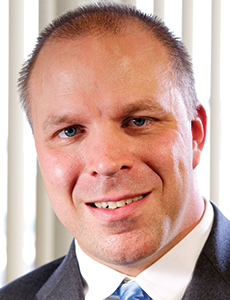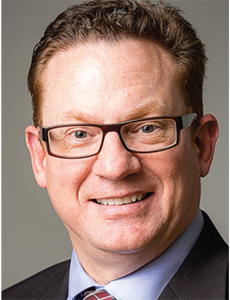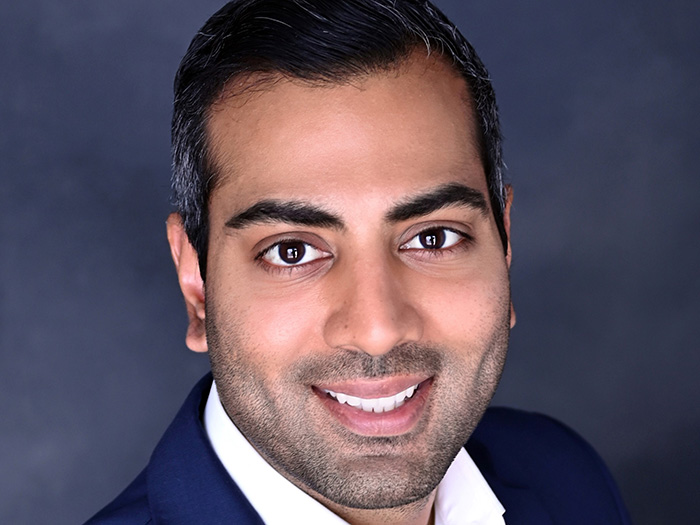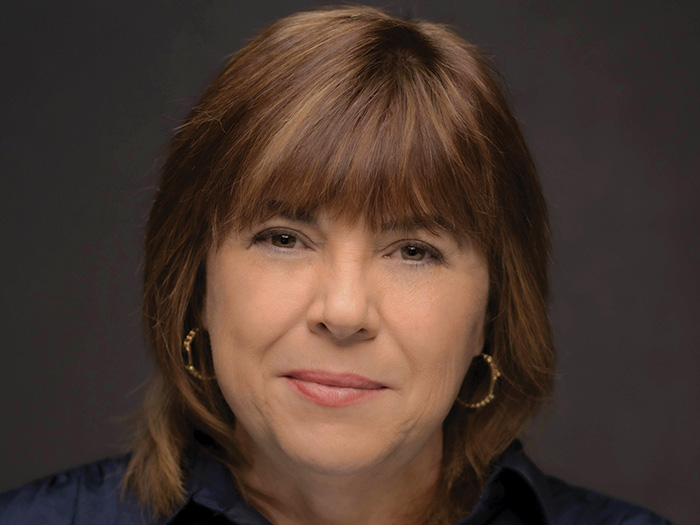Health Care Risk Management
Discretion Advised

Life-saving health care can be unpredictable, controversial and skirt the frontiers of science.
Due to its very nature and the research methods it employs, this vital work sometimes attracts the attention of special interest groups, protestors and even criminals. That’s why health care risk managers need to balance access to care with the security issues some departments pose.
Animal testing, reproductive services and departments that house nuclear materials can all draw attention from those who would shut those operations down if they could, or at the very least, harm a hospital system’s reputation.
Take, for example, family planning.
After a deadly shooting at a Colorado Planned Parenthood office, an abortion doctor named Diane Horvath-Cosper gave several press interviews where she vowed to continue with her services and advocate for family planning rights at her Washington, D.C., hospital.
Soon after the news stories aired, she was called in to see the chief medical officer.
The executive asked Horvath-Cosper to stop talking to reporters because he did “not want to put a K-Mart blue light special on the fact that we provide abortions,” she later said.
Horvath-Cosper did stop her media interviews. And then she filed a civil rights complaint against the hospital. She alleged the hospital discriminated against her for expressing her moral conviction on abortion. The hospital should instead bolster security, the complaint said.
The hospital did hire a security guard and install cameras. Yet it didn’t follow through on many other suggested measures, such as installing shatterproof glass or an intercom system, she said.
The Need to be Discreet
This case highlights the difficulties hospitals face when they need to be protective of their operations to avoid drawing attention from vocal activists or violent actors.
Today’s health systems are often vast networks offering not only medical care, but also advanced research, retail stores, pharmacy and social services. Each hospital network is searching for ways to prop up revenue while providing cutting-edge care ahead of the competition.
But before adding new business lines, experts caution that hospital administrators weigh all reputational and security risks they may attract, and continually reassess those risks based on a changing environment.
Once risk managers know the risks and plan for them properly, they should be able to weather most storms.
The University of Washington is pressing on with the construction of a new underground animal research facility adjacent to its hospital despite continuous protests by animal rights organizations.
This spring, members of “No New Animal Lab” shut down construction for a day when two protesters chained themselves to an excavator working on the site. Several people were arrested for criminal sabotage.
The protesters even went to the vacation home of a construction company executive in Fort Lauderdale, Fla., and scrawled chalk messages all over his driveway that accused him of killing puppies and kittens.
“Even though you may keep it quiet, the reality is people will know; those interest groups will know and they will target you as far as media and protests,” said Jeff Young, president of the International Association for Healthcare Security & Safety (IAHSS).
“Whether abortion or animal research, there are very active groups out there that protest hospitals on a regular basis,” he said.
Conduct Regular Assessments
The hot-button issues in hospital settings aren’t limited to family planning or animal research.
Today’s state-of-the-art teaching hospitals usually house nuclear materials; they’re conducting gene trials and banking dangerous disease samples while hunting for cures.
That is a whole new risk as far as environmental factors, accidental disbursement or terrorism if the samples get into the wrong hands.
Some hospitals have even quietly set up onsite “forensic” units dedicated to the care of dangerous prisoners and the mentally ill.
Often these ancillary departments coexist unseen in health care complexes. But if promoted, they may attract bad actors seeking to steal valuable items or cause harm to the public.
Hospitals must provide an extra layer of protection for the staff and public who may venture into these high-risk areas, and also make sure high-risk materials or people don’t get out.
“An organization needs to consider that risk even before they decide to go in that area,” Young said.
To properly prepare, risk managers must strategically work with co-workers and service providers to manage these reputational risks. They need to conduct regular assessments to stay ahead of changes in the community and fortify security.
“There needs to be a communication plan and a media plan to respond to those outside groups that will comment or protest against the services that will be provided,” Young said.
Then there must be a thorough security assessment.
The University of Washington is pressing on with the construction of a new underground animal research facility adjacent to its hospital despite continuous protests by animal rights organizations.
“Really good hospitals do their assessment, they find things and they audit that assessment every year to see if there are changes and if they are cost-effective,” said Sean Ahrens, practice leader for security consulting and design at Jensen Hughes.
The risk assessment should account for the hospital’s environment and surrounding community and also anticipate future changes, Ahrens said.
Every employee has to be aware and on the lookout for problems, and know what to say and how to react if they encounter a problem, said Maureen Archambault, regional managing director of health care services at Arthur J. Gallagher & Co.
It’s not just going to be to an administrator or security guard encountering problems, she said. Training needs to reach all employees working in the hospital.
“It’s great to have a plan. But if people can’t follow it and don’t understand it, it’s not going to happen,” Archambault said.
Safety drills in partnership with community first responders are also vital practices to test and teach security procedures, she said.
One challenge in risk prevention strategies is that extra security recommendations are often seen as an increased cost. And the hospital needs to decide if their community is comfortable with the presence of armed guards.
“Security obviously has a benefit, but it’s always seen as a cost,” Ahrens said.
Administrators need to view security personnel as cost savers, he said. If a security guard is added in the emergency room and an attack never occurs, administrators may ask if the extra personnel was a cost or a valuable deterrent.
“Having a security presence in the emergency department potentially precludes someone from bringing a weapon, but we’ll never know for sure,” Ahrens said.
Young, with IAHSS, emphasizes that security personnel also should be viewed as part of the patient care team.
“I’m a health care worker; I just happen to do security,” Young said.
“Everything we do in health care security, we should be able to track back to patient care or patient experience,” Young said.
Every hospital is unique, so there is no generic template to follow. Whether in a city or rural community, the environment inside and outside the hospital dictates the controls that are put in place, Ahrens said.
“There are so many things going on in hospitals, they are no longer safe havens and it seems to be escalating,” Archambault said.
Hospitals allow public access 24 hours a day. The halls are teeming with patients, visitors, vendors, doctors, nurses, office workers and students.
“Having a security presence in the emergency department potentially precludes someone from bringing a weapon, but we’ll never know for sure.” –Sean Ahrens, practice leader, security consulting and design, Jensen Hughes
While off-hours visitor restrictions reduce the population, the hospital still needs to remain welcoming to all who need it. Extra security layers should not prevent access to care.
“It used to be a safe haven but now we are seeing more and more of the outside influences coming within the walls of the hospital,” Young said.
Sealed Source Materials for Dirty Bombs
High-risk radioactive material is also stored in hospitals and could be targeted by terrorists.
Medical uses for the material include treating cancer patients, purifying blood, or conducting tests and research.
To prevent dispersal once the material is used, it is typically sealed in a stainless steel, titanium or platinum capsule called a sealed source.
The concern is that terrorists could obtain sealed source containers to make a “dirty bomb.” So hospitals must reinforce security and supervision in the area where the material is used or stored.
The National Nuclear Security Administration (NNSA) identified about 1,500 U.S. hospitals and medical facilities with high-risk radiological sources that contain approximately 28 million curies of radioactive material and are candidates for security upgrades.
A 2012 government survey found that NNSA spent $105 million to help 321 hospitals complete security upgrades, such as remote monitoring systems, surveillance cameras, enhanced security doors, iris scanners, motion detectors and tamper alarms. This program continues through 2025.
While the government encourages extra security and offers some assistance to pay for it, the program isn’t mandatory and some hospitals passed on the offer, leaving potential vulnerabilities.
Insurance support
Many hospitals struggle to obtain the right balance of insurance for these high-risk areas.
The Terrorism Risk Insurance Act (TRIA), created in 2002, is triggered by a government-certified act of terrorism, including use of unconventional weapons, also known as nuclear, biological, chemical, or radiological (NBCR) weapons.
The challenge many hospitals face in terms of TRIA is that an active shooter event may not be ruled a terrorist act by the U.S. government.
That leaves the hospitals without coverage for damage to visitors, patients or staff.
One newer product is stand-alone violence and malicious acts coverage, said Archambault. This is different from terrorist coverage created after the Sept. 11 attacks.
Stand-alone insurance provides a much broader coverage without government certification.
Another solution that has been discussed for a number of years is allowing insurers to accumulate tax-deferred catastrophe reserves.
“We need to be asking, ‘What are the specific differences in exposure and what special insurance products aim to address it?’ ” Archambault said. &












